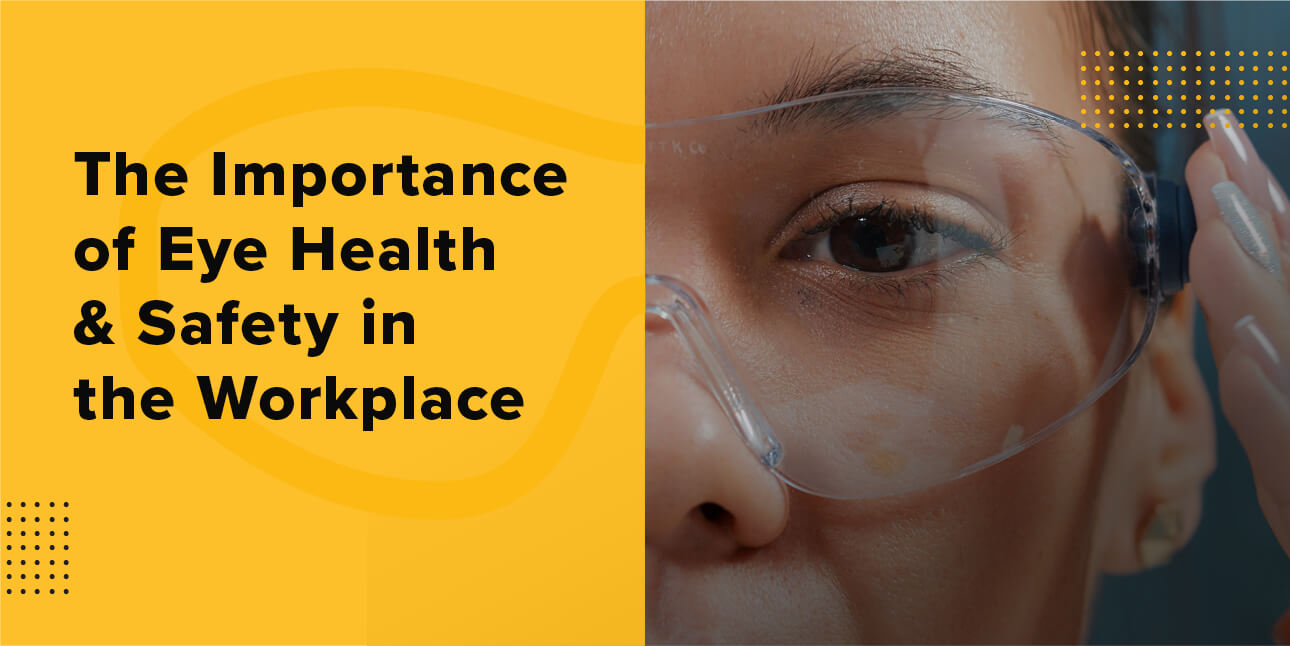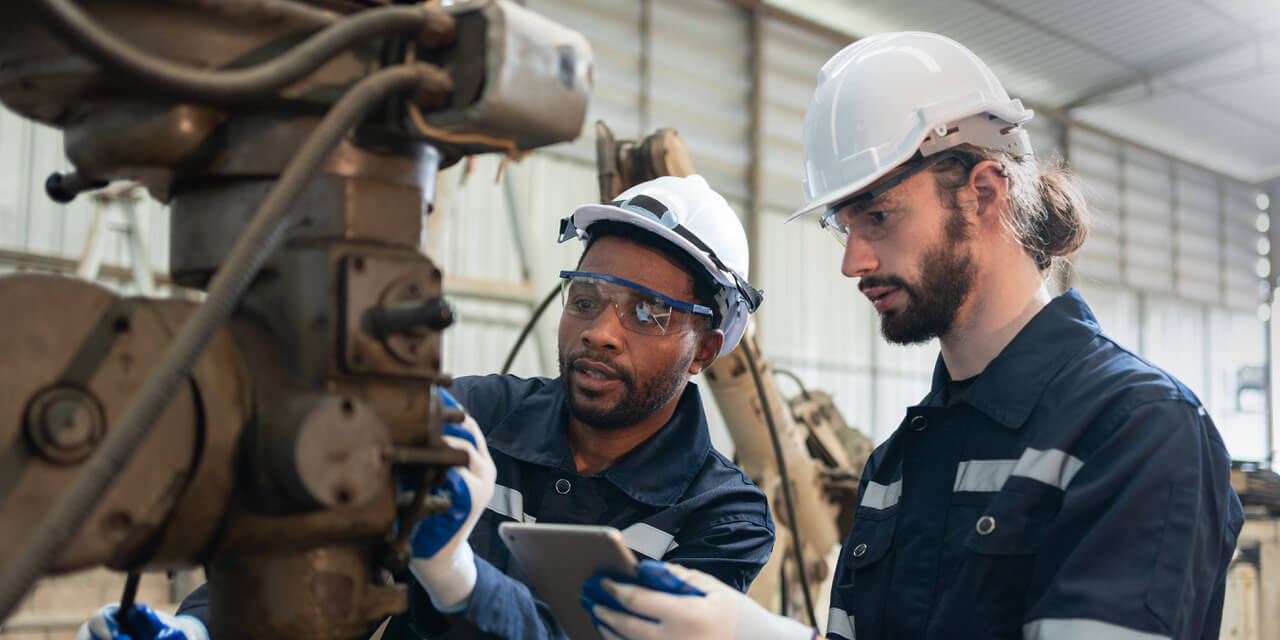PSG Eyewear
May Blog Post
In Conversation with PSG Eyewear - Eyes on World Workplace Safety Day

When we go to work, we expect to feel safe. Yet, according to Safe Work Australia's latest data, 169 Australians never returned home from work in 2021. That's 169 too many. World Day for Safety and Health at Work is observed annually on 28th April. In this Q&A, the PSG Eyewear team discusses the importance of World Safety Day and how we are helping companies achieve safer workplaces.
What is World Day for Safety and Health at Work?
PSG: At its heart, World Day for Safety and Health at Work promotes the prevention of occupational accidents and diseases across the globe. As an annual event, it provides companies with an essential awareness-raising platform and an opportunity to review, reset and renew their focus on promoting and creating a safe and healthy workplace culture. This year, 28th April happened to fall on a Friday. It was a poignant day for PSG, as Friday is known to be the most common work day for eye injuries to happen.
Why was World Day for Safety and Health established?
PSG: World Day, or 'Safe Day' as it's sometimes known, was established in 2003 by the International Labour Organisation (ILO) to advocate for and raise awareness of the prevention of accidents and diseases at work. The ILO is a UN agency that brings the governments, employers and workers of its member states together to set labour standards, develop policies and programs and strengthen dialogue on work-related issues.
What's PSG's role in helping companies achieve model safety in the workplace?
PSG: PSG Eyewear is working towards this through education, research, advocacy and industry- leading prescription and non-prescription safety glasses. So many Australians work in industries that carry a greater risk of eye injury. Our mission is to help companies protect and enhance their employees' vision using certified safety eye protection that meet the appropriate regulations and standards for their industry and work type.

How does the lack of protective eyewear affect people and the economy?
PSG: The physical, psychological and economic cost of vision loss caused by lack of appropriate eye protection at work is significant. According to Optometry Australia, the direct cost of eye injuries in Australia is estimated to be more than $155 million annually. Up to 90 per cent of eye injuries are preventable, and 60 per cent of eye injuries in Australia happen in the workplace 3 . Many of these workplace eye injuries could be avoided with the correct eye protection.
Being a specialist division of EssilorLuxottica we have access to an outstanding range of quality lens and coating technologies for our safety eyewear. This enables people to enjoy sharp, clear vision through certified non-prescription and prescription safety glasses.
How do optometrists help ensure eye safety in the workplace?
PSG: Workplace eye safety is much more than handing employees a pair of safety glasses and telling them to wear them. Optometrists and employers both have a role to play in eye workplace health and safety, and we recommend they work together.
Trained safety eyewear optometrists can provide your business with a critical assessment of low, medium and high-impact hazards. In addition, they can help your people select the best non- prescription and prescription safety glasses for their vision and work environment.
How can companies find optometrists trained in non-prescription and prescription safety glasses?
PSG: We recommend visiting our Safety Eyewear Optometrist Finder to locate your local practice. Our PSG Eyewear Optometry Agents are primary healthcare providers in eye injury prevention. They understand the different eye protection options that are recommended in Standards AS/NZS 1336 (Recommended practices for occupational eye protection) and that meet AS/NZS 1337 (Occupational eye protectors) and AS/NZS 1337.6 (Prescription eye protectors).
All our safety eyewear optometrists are trained to fit non-prescription and prescription eye protectors, lenses, treatments and coatings that meet specific work and recreational safety needs. Some even provide expert services on work sites.

How was PSG involved in establishing safety eyewear standards?
PSG: PSG Safety Eyewear's Founder, John Moore, firmly believed in the importance of occupation- specific safety glasses. During his lifetime, he successfully campaigned for the establishment of an industry Standard, which led to the release of AS/NZ 1337.6 in April 2007.
Where can companies find information on occupation-specific safety eyewear regulations and Standards?
PSG: Our Protective Eyewear Regulations and Standards page covers critical information. PSG has also put together Eye Workplace Health and Safety Fact Sheets for industries known to carry a higher risk of eye injury, including , Building & Construction, Manufacturing, Oil & Gas, Agriculture, Aerospace & Aviation, Food Production & Packaging, Transport, Logistics & Warehousing, Utilities, and Pharmaceutical & Health. You can also download our PSG Eyewear PPE and Eye Protection Standards Explained Resource Document here.
How often should companies review and replace their safety eyewear?
PSG: As an employer, it's your duty to ensure your protective eyewear is always fit for purpose. The penalty for non-compliance can be steep for an employer. For an employee, a serious eye injury can be life-changing.
If the wearer's vision has changed or the protective eyewear is damaged due to an impact, you must change the entire pair of safety glasses. This is because an impact may compromise the safety eyewear's protective capabilities. World Safety Day is an excellent annual reminder to review your company's protective eyewear policies and ensure your people's vision check-ups are up to date.
How can companies foster a safe and healthy workplace?
PSG: This year's World Day theme was 'A safe and healthy working environment is a fundamental principle and right at work.' It's a rallying cry for everyone to come together and build a positive workplace safety legacy. Safe Work Australia champions good work design principles to help companies meet their work health and safety obligations. Its handbook provides guidance on good work design and includes ten principles relevant to any workplace business or industry. You can download the handbook here.
Are workplace safety risks changing?
PSG: The UN has identified that 'new and emerging occupational risks may be caused by technical innovation, social change or organisational change'.
Examples are new technologies and production processes such as nano and biotechnologies, new working conditions, and emerging forms of employment such as self-employment, outsourcing and temporary contracts. On World Day for Safety and Health at Work, the ILO brings experts together to address the impact of changing and emerging occupational safety and health challenges such as these.
How does PSG Eyewear monitor and highlight changes to workplace eye safety risks?
PSG: Being part of the Essilor Group enables us to monitor global and local statistics, research and anecdotal evidence relating to eye injuries and safety eyewear.
We're proud to work with peak industry bodies to champion eye safety in the workplace and create vital resources. For example, our Global Standardisation Director, Annette Hoskin, was the Lead Reviewer for Optometry Australia's 2020 Occupational Optometry Guide. This comprehensive resource provides essential information on occupational eye injury prevention, vision assessments, eye protection products, Australian vision and eye-protection standards and screening protocols. The guide also advises optometrists about eye safety consultations and how to conduct workplace screenings. Annette is passionate about preserving sight, and I'm sure you'll hear from her in our future PSG Eyewear articles.
To learn more about PSG's non-prescription and prescription protective eyewear, contact the team or find an optometrist here.
Reference list:
1.Australian Institute of Health and Welfare 2009. Eye-related injuries in Australia. Cat. no. INJCAT 123.Canberra: AIHW
2.Louis D. Pizzarello (1998) Ocular trauma: time for action, Ophthalmic Epidemiology, 5:3, 115-116, DOI: 10.1076/opep.5.3.115.8366
3.Optometrists Association Australia, 2010, Looking after your eyes: http://www.optometrists.asn.au